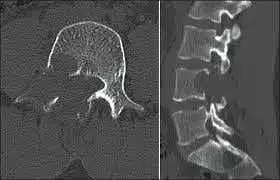A tumor is an abnormal proliferation of a tissue in the body.
Tumors are divided into two main groups as ‘benign’ or ‘malignant’.
Treatment varies depending on the type of tumor, its placement, whether it has spread to other areas (metastasis) and its involvement with surrounding tissues.
Spinal tumors show some differences compared to those on other sides of the body. Since the spinal cord and nerves pass through it, even if the tumor is benign, they may cause pressure on the nerves due to the area it covers.
Spinal tumors can also be divided into two main groups according to the tissue from which they originate.
The first are tumors originating from the bones and soft tissues that make up the spine.
And the second group is the tumors originating from other organs of the body that spread to the spine (metastasis), which constitutes the majority of spinal tumors.
The most common tumors that spread to the spine are lung, breast and prostate cancers.
The treatment procedure is specified by a multidisciplinary approach. It should be determined whether the tumor will recover with radiotherapy or chemotherapy.
If the tumoral mass causes paralysis in a certain muscle group by pressing on the nerves, the treatment is surgery.
Among the surgical treatment options, there are many methods from bone cement applications made with closed methods to operations in which the spine is completely detached.
Here, the decision is made individually for the patient’s case.
All cancer cases have characteristics unique to both the patient and the cancer itself. Therefore, considering all these factors, it is the best approach to decide how the treatment will proceed in cooperation with the oncology and radiation oncology departments.










